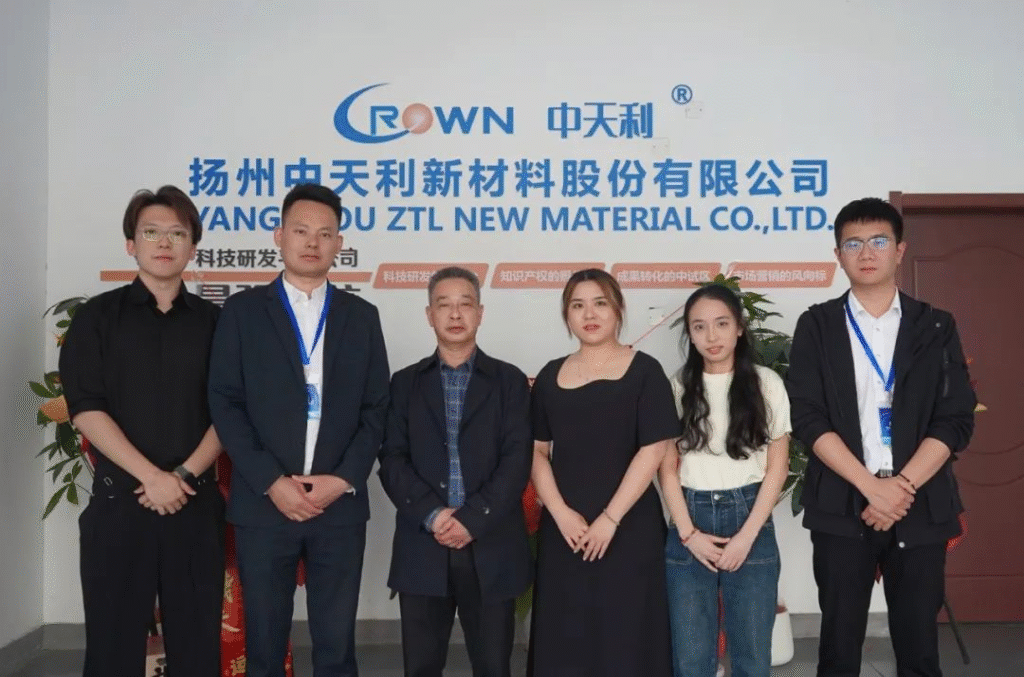In the modern chemical industry chain, catalyst materials are akin to chips in the electronics sector—they determine the efficiency and quality of industrial production. Among them, alumina-based catalyst supports are core materials widely used in refining and chemical sectors. However, high-end products in this field have long been dependent on imports. In this issue, we republish—with authorization—a report from “Powder Circle” about Yangzhou ZTL New Materials Co., Ltd., a company located in the Weikai jurisdiction. This enterprise has achieved a breakthrough in domestic high-end alumina catalyst materials through innovative processes based on alcohol-aluminum hydrolysis technology.

Breaking Through Technological Barriers — Ultrafine Pore-Forming via Alcohol-Aluminum Hydrolysis Process
The pore structure of catalyst supports is one of the key factors determining their performance, encompassing dimensions such as pore size, pore volume, specific surface area, and stability. These parameters influence the exposure of active sites, mass transfer efficiency, and mechanical strength, directly affecting the activity, selectivity, and lifespan of catalysts.
According to Mr. Li Xianping, Technical General Manager of ZTL Chemistry, conventional alumina powders used for catalyst supports often suffer from low purity and insufficient pore volume, making them unsuitable for medium-to-high-end applications. In response, ZTL Chemistry has benchmarked against Germany’s SASOL catalyst powders and innovatively adopted the alcohol-aluminum hydrolysis method. Using high-purity aluminum foil and isopropanol as raw materials, they synthesize aluminum isopropoxide, which undergoes molecular-level hydrolysis followed by high-temperature calcination to precisely control pore structure parameters. As a result, they can now provide customizable powders with a specific surface area of 300–400 m²/g and pore volume ranging from 0.7 to 1.5 cm³/g, along with high-purity ultrafine alumina catalyst supports exhibiting excellent hydrothermal stability. Product forms include cylindrical, ring-shaped, spherical, tablet, granular, and extruded types.

Moreover, in order to ensure the full functionality of active components such as precious metals (e.g., Pt, Pd), some applications require extremely high purity in alumina catalysts—with specific metal element concentrations as low as below 2 ppm, even at ppb levels. The alcohol-aluminum hydrolysis process allows precise control of key impurities such as Fe and Na through purification techniques during processing, overcoming purity limitations in conventional alumina production. This enables product purity levels to reach 4N or even 5N grades. At present, the high-end alumina catalyst supports produced by ZTL Chemistry can rival certain products from Germany’s SASOL and the U.S.-based Honeywell UOP, making domestic substitution possible.
Ecosystem Extension — Diversified Development of Aluminum-Based Material Series
ZTL Chemistry‘s competitiveness goes beyond high-end alumina catalyst products. By leveraging the globally advanced alcohol-aluminum hydrolysis process, they have developed a product chain with outputs at each production stage. This includes isopropyl aluminum, high-purity SB powder, high-purity ultrafine alumina powder, and high-purity ultrafine AlON, AlN, and Y₃Al₅O₁₂ powders. These products find applications beyond catalysts, extending into sapphire substrates, lithium battery separator coatings, pharmaceuticals and agrochemicals, semiconductors, functional ceramics, and chemical production—covering numerous high-tech sectors.
Notably, ZTL Chemistry’s production process is nearly free of harmful gas emissions. The raw materials used are relatively environmentally friendly, and much of the isopropanol in the reaction can be recycled, with utilization rates currently reaching 80–90%. Additionally, the process generates minimal waste water, exhaust gases, and solid waste—approaching zero emissions. This enables the company to achieve both environmental and economic benefits, successfully breaking the stereotype of traditional high-pollution chemical processes and promoting a “green, eco-friendly” manufacturing model.
Summary
The domestic substitution of “choke point” materials is crucial to national industrial security and economic resilience. By leveraging its core alcohol-aluminum hydrolysis technology, The domestic substitution of “choke point” materials is crucial to national industrial security and economic resilience. By leveraging its core alcohol-aluminum hydrolysis technology, ZTL Chemistry has made a technological breakthrough in the field of high-end alumina-based catalyst supports. This has helped reduce reliance on foreign monopolies and contributed to China’s momentum in advancing homegrown high-end materials.
However, as general manager of technology Mr.Li acknowledges, many emerging technologies are still dominated by Western countries, and China faces a long road ahead in achieving domestic substitution across multiple sectors. It is hoped that, especially under today’s complex international circumstances, more ambitious domestic companies like ZTL Chemistry will rise to fuel the advancement of China’s manufacturing capabilities.


